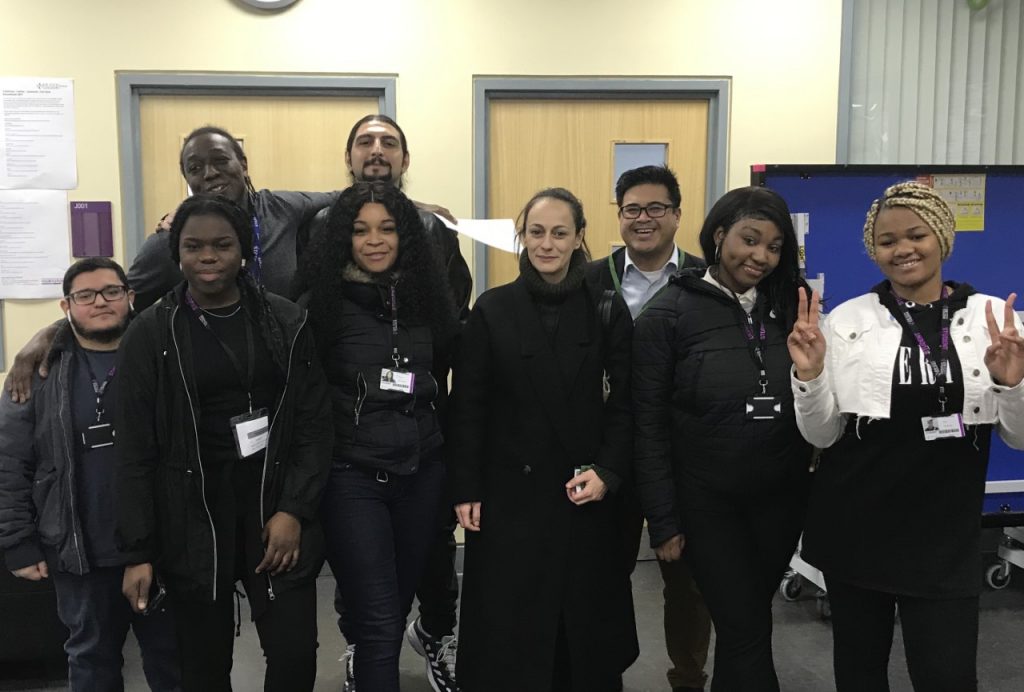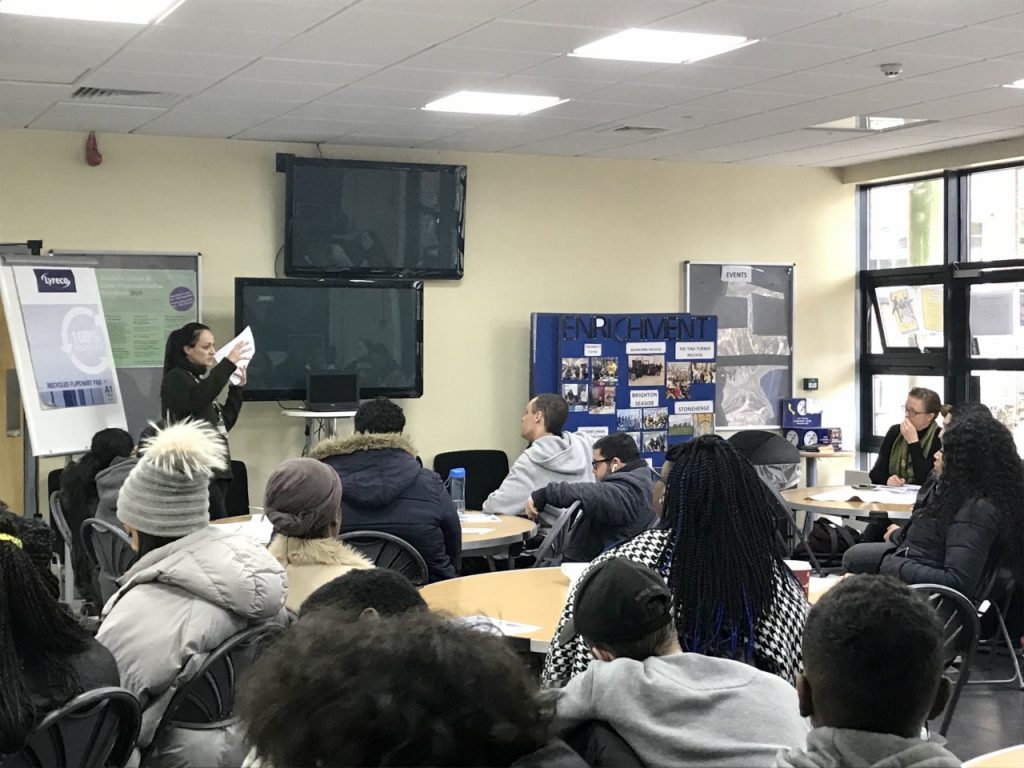Safety digitally co-designed by young people to tackle knife crime in London
Project Lead
Artemis Skarlatidou
Senior Research Associate, Geography
University College London
Contact: a.skarlatidou@ucl.ac.uk
Co-Investigators
Dr Reka Solymosi (Univ. of Manchester)
Supporting Partner(s)
Schools in East London (members of Citizens UK network), Froi Legaspi (Citizens UK)
Challenge
Knife crime offences in England and Wales have hit a record high since 1946; with most incidents in the capital involving young people 10-25 years old. Existing methods to tackle knife crime such as stop and search have been contributing to deepening distrust-in-policing.
The projects’ aim was to create a technology-based mechanism to explore young people’s Mental Models on knife crime and collect data to understand their experiences and situational contexts of knife crime.
Smart tech is often used to collect data about people’s lives. Instead this project looked at how smart technology could be used in supporting young people to share their views around knife crime, and co-create responses to improve trust between police and young people.
Placing young people at the heart of responses to knife crime
CinCity worked directly with young people affected by knife crime and police officials in Hackney to understand young people’s experiences and situational contexts of knife crime, including their perceptions of trust.

Fear of crime app
The project used Risk Communications’ Mental Models approach to understand and compare police officials’ and young people’s perceptions about knife crime, trust in policing as well as their needs and expectations. This understanding was used to design the ‘Fear of Crime App’, which was used to capture young people’s experience and feelings about knife crime in their local areas.
Outcomes
The project team interviewed 23 young people and police experts and constructed their Mental Models to reveal that young people proved extremely knowledgeable, especially when it comes to risks and motives of knife crime; a knowledge they have mostly gained through their personal experiences and those of their peers and communities, which align with both academic research literature and expert concepts.
50 young people were involved as co-researchers and used the app to interview their peers and capture additional data. The project collected about 100 reports in total, which gave us a good understanding of how they feel about crime in their area and mostly outside of it, in areas with which they are less familiar.
Insights
Young people proved extremely knowledgeable, especially when it comes to risks and motives of knife crime; a knowledge they have mostly gained through their personal experiences and those of their peers and communities, which align with both academic research literature and expert concepts.
The Mental Models mainly emphasised ‘stop and search’ activities which they identified as having a strong racial bias, and as “unfair and abusive”. They feel these activities are responsible for their complete lack of trust in policing.
Young people’s understanding of policing approaches to knife-crime is not entirely aligned with all policing initiatives; young people are very aware of enforcement-based activities (i.e. mainly ‘stop and search’), but completely unaware of the community-building ones.
It is extremely important to make young people aware of non-enforcement activities, as a means to foster trust and engagement, which would also create the basis for collaboration and communication exchange that young people and the police think are necessary for reducing knife crime in London.

Future Directions
To further understand and identify patterns of worry about knife-crime amongst young people in London, the project team proposes the collection of fear of crime data across their entire activity spaces, which would help redefine “local area” from an administrative boundary such as “Hackney” to young people’s personal definitions of their neighbourhoods.
The project has a meeting with MOPAC to discuss how the findings can be implemented London-wide with the Metropolitan Police, and gain relationships with senior police officers. They will discuss the support they could provide, as they look to identify and secure funding which would allow them continue the work around knife crime and young people and expand it to the rest of London.
Explanation of key terms
Mental Models (MM) approach: A mental model is an explanation of someone’s thought process about how something works in the real world. It is a representation of the surrounding world, the relationships between its various parts and a person’s intuitive perception about his or her own acts and their consequences. Mental Models can help shape behaviour and set an approach to solving problems (similar to a personal algorithm) and doing tasks.
Risk Communication: Risk communication refers to the exchange of real-time information, advice and opinions between experts and people facing threats to their health, economic or social well-being. The ultimate purpose of risk communication is to enable people at risk to take informed decisions to protect themselves and their loved ones. Risk communication uses many communications techniques ranging from media and social media communications, mass communications and community engagement. It requires a sound understanding of people’s perceptions, concerns and beliefs as well as their knowledge and practices. It also requires the early identification and management of rumours, misinformation and other challenges.
Papers
Understanding Knife Crime and Trust in Police with Young People in East London. SAGE journals Crime & Delinquency

